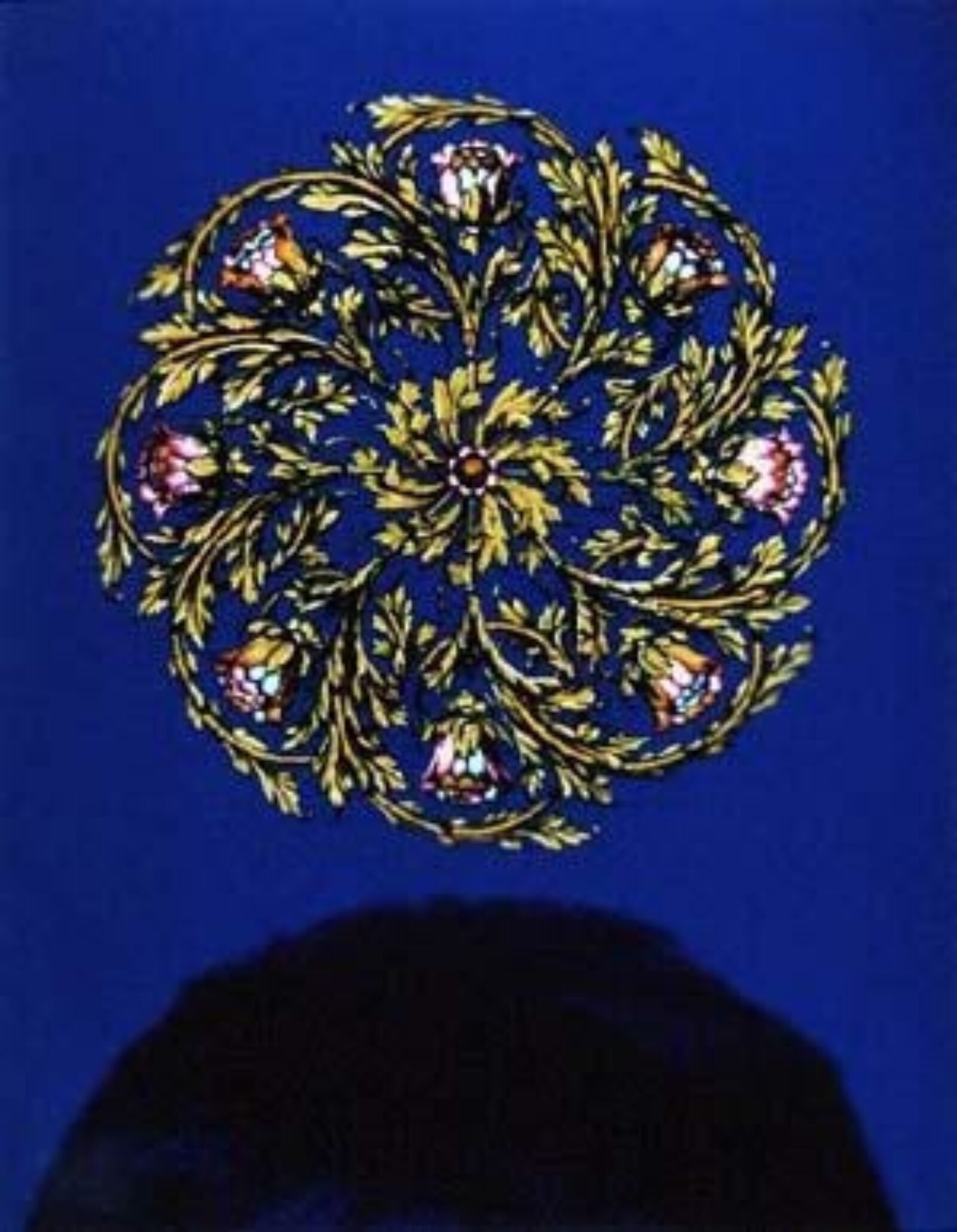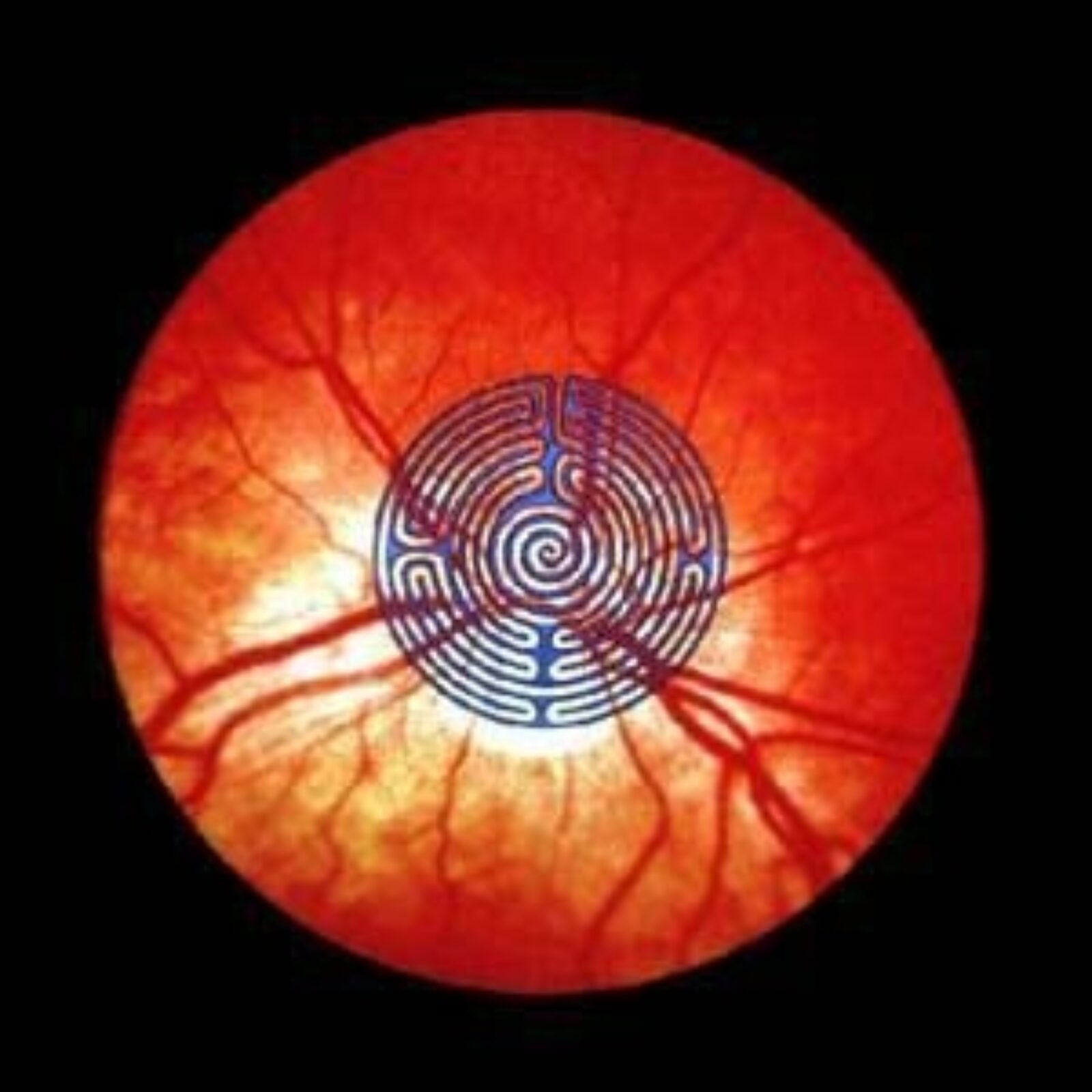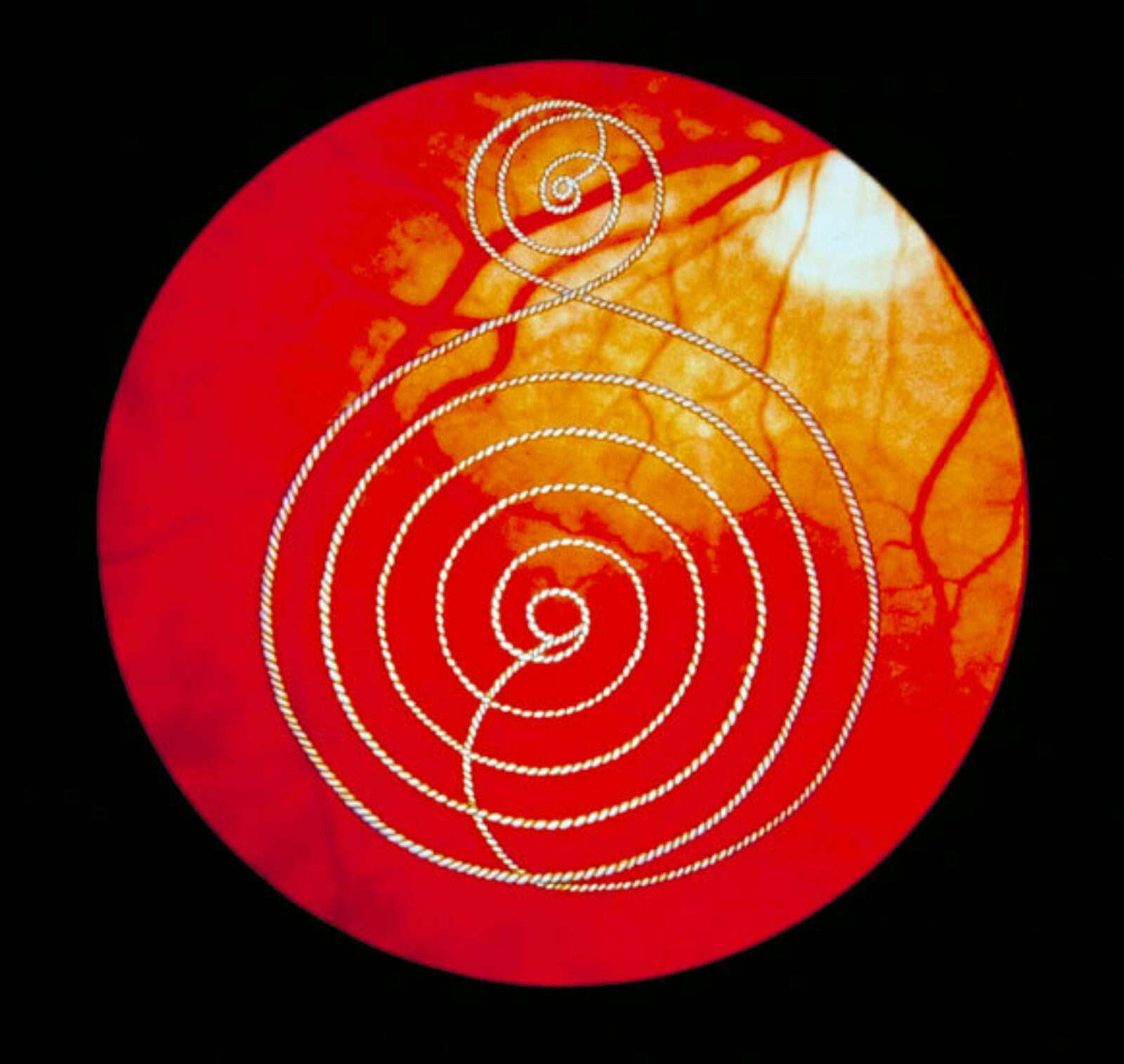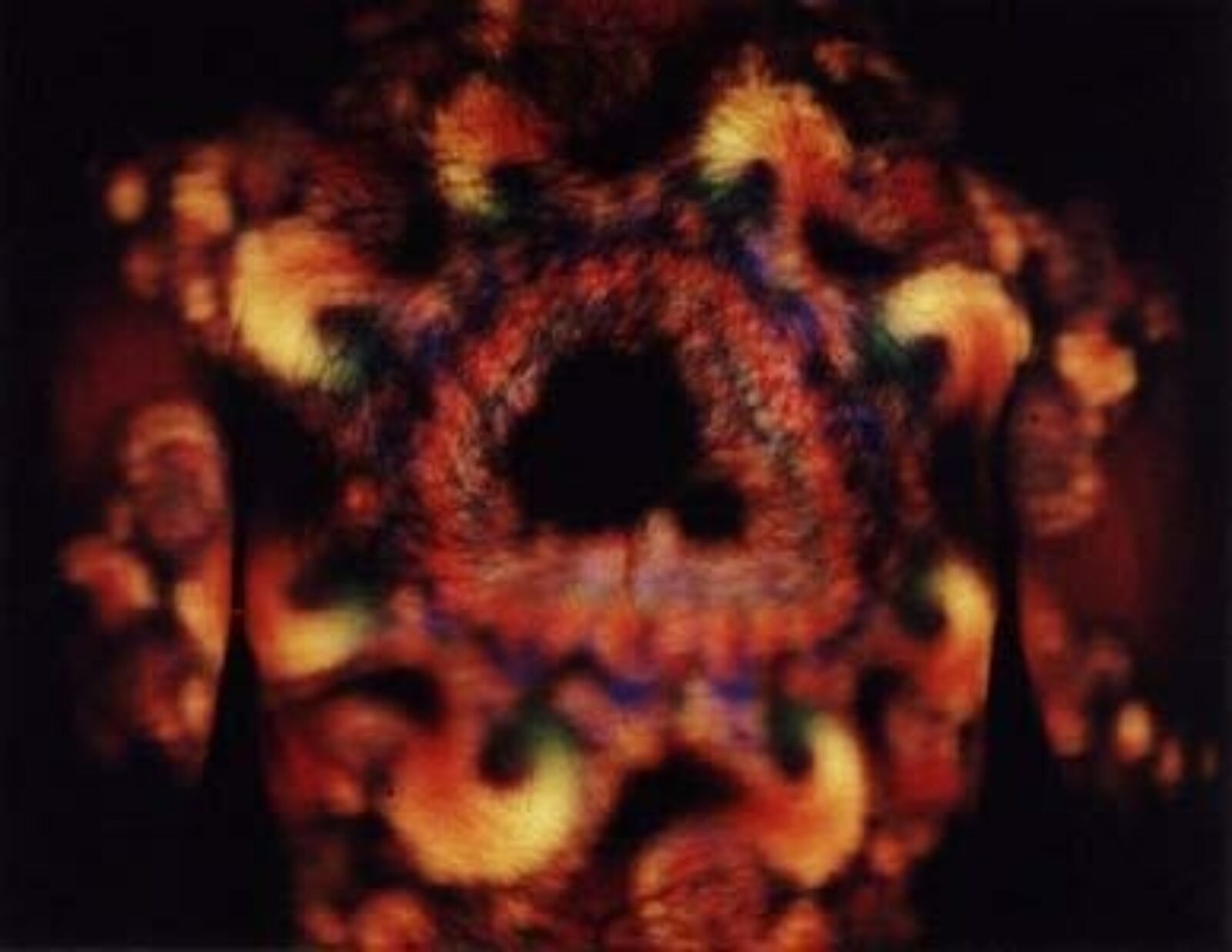




















featured gallery for July 2002
Rob Flack: This Is True To Me
Robert Flack had the spirit of a leprechaun, or so I thought—vivacious, sweetly mischievous, and light as air. I knew and loved him for many years, and we brought each other the gift of our acknowledgement: We each had a vision of the other and we each needed each other’s vision. Rob was an angel—not figuratively, the way one might say of such a sweet guy, but literally, spirit sent down to earth to illuminate our material lives for a few brief moments.
I first met Rob in the late 70s, when he was a student, and I was one of the artists of General Idea. Rob appeared in our photoworks, and in the pages of FILE Magazine. I was Director of Art Metropole, a Canadian artist-run center for artists' books, video, audio, and multiples. I hired Rob to pack books, and I remember his perpetual humiliation at his low salary and lowly tasks. His artwork was full of flying figures, slight young men transported through the air, sometimes as negative cutouts, delicately cut from paper, pure space; at other times, trembling slivers of aluminum supported by wires, or by metal coils rescued from an abandoned mattress. I realize now that they were self-portraits of his fragile but feisty self, spiritually developed in a way unusual for his age.
In the early eighties Rob moved to the East Village in New York City, where he grew sideburns, met Madonna, and began to understand himself as a part of gay culture and as a creative spiritual being. He arrived at a time immediately preceding AIDS, and the East Village was fermenting with homosexual desire.
As his work matured it became wilder, more passionate, more crazed, bursting with a sort of nutty spiritual frenzy. After an extended trip to India in the mid-eighties (and a follow-up trip to Canal Street), he began to work with layers of plastics in pearlized, mirrored and luminescent finishes, acid colors and psychedelic patterns. These he would cut and assemble with very fine under- and over-painting into mad fantasies that felt more Hindu than Baroque. My favorite is a rendition of a four poster bed, floating in space, with its wild white draperies flying outwards: It is as if the force of the being occupying the bed (but no one is visible) has an energy that has sent everything tumbling outwards. His internal spiritual force was gathering force.
Rob was very sick during his travels in India, and some time afterwards he discovered his positive HIV status. I think it is safe to say that The Empowerment Series (1990-91) are the result of his sudden realization of mortality; I see them as his first mature work. Where the previous works had been frenetic, generous, and entertaining, much like Rob himself, these set aside the need to please and reached into a deeper place. Rob continued to represent the Self, but he was conscious now of what he was capable and of what he wanted to achieve: a certain unity of creative expression, self-realization and clear calm abiding.
The Empowerment Series consists of 8 large photographs, each 40 x 30 inches. They form a sort of map of the human body. "Anatomical Garden," the last, acts as a reprise of the others, an overview of the spiritual body; the remaining seven each depict one of the seven chakras. They were first exhibited at Feature in New York City.
"The first chakra, or root center, is positioned at the base of the spine, the sacral plexus. The second chakra is situated in the spine in the region of the genitals. The third chakra or 'gem center,' is at the level of the solar plexus. The fourth is located at the spinal region of the heart. The fifth chakra is located at the juncture of the spinal column and the medulla oblongata behind the throat, with the sixth situated between the eyebrows. The seventh chakra is located four finger-breadths above the crown of the head. This is seen as the center of quintessential consciousness where integration of all the polarities is experienced and the paradoxical act of transcendence is accomplished."1
From the time I first met him, Rob wanted to meld his art with music, and in his last years he was able to do that. Andrew Zealley wrote the music for The Empowerment Series and you can read his commentary here.
In 1991, Rob went on an extended road trip with his best friend Ara, ending up at a meditation retreat in Santa Fe, where he took a series of "life regression" sessions. Instead of seeing past lives, Rob saw images, which he recorded in great detail. These became the basis for his next and final series of works, Love Mind.
Love Mind consists of two basic families of images, which sometimes overlap: photographs of parts of the body, on which he has projected psychedelic patterns; and finely drawn iconic images, superimposed on photographs of swirling galaxies and then re-photographed. The first group reiterate the chakra motif but with a difference: It is as if the HIV infection has become absorbed into the creative vortex of the human body and is revealed as an integrated part of the Self. The second group draw on images from his work of previous years, much of it using the visual language of tattoos, itself drawn from a sort of degraded esoterica and applied to the body. Together they form a contrapuntal vision: the 28 photographic images, which feel computer generated but are not, dance around his repeated themes, and weave them together: the body, the chakras, the spiritual self, an expression of gayness as pure creative unfolding, a gift to the universe.
When Rob died, on October 20th 1993, easily abandoning his physical body at the first sign of opportunistic infection, it was his joy that carried him outwards. He visited each of us in the next few days, touching us briefly, then moved on.
Footnote:
1 Nancy Campbell, Robert Flack, exhibition catalogue (Guelph: MacDonald Stewart Art Centre, 1993), unpaginated.
notes on the incidental music for the empowerment series
Andrew Zealley
My score to Robert Flack’s EMPOWERMENT series comprises 7 pieces of music. This number is symbolic of the body chakras. An additional, closing track to the suite ("VOICE: Martyr’s Heartbeat Mix"), takes the form of a remix that also features musical elements from the entire score -- almost like an overture in reverse (the "overture" traditionally comes at the beginning and features melodic and rhythmic motifs culled from the larger score that follows).
Each successive piece in the EMPOWERMENT score develops in complexity, both structurally and in terms of musical convention (tonality and rhythmic-melodic counterpoint). For example, the opening track, "INTROTONE," is a cycling loop that repeats unevenly, seemingly off-kilter. The sounds of INTROTONE include references to "I Feel Love" (Giorgio Moroder/Donna Summer/Pete Bellotte), a track that both Rob and I felt strongly about as not just a primary melodic motif in 20th century music but also as the defining moment of the disco/dance club movement -- a forum that Rob seriously considered as thee temple, a profound place of spiritual celebration (the lights, the glitter, the raising of group energy…). By the close of the EMPOWERMENT score, the music has developed into a complex composition wherein rhythms and melodies weave around each other while bolder tonal brush strokes sweep across the soundscape in large gestures. This overall "evolution" from piece to piece represents the approach that Rob and I both consider(ed) as EMPOWERMENT -- the process of acquiring information and understanding and the consequential refinement of ideas and expression -- honing our thoughts into single bullet points.
The music for EMPOWERMENT is entitled:
NATURE: THIS IS A RECORDING
EMPOWERMENT 1
The track listing is as follows:
INTROTONE (01:57)
SEX (04:34)
NATURE: THIS IS A RECORDING (02:34)
HEAD (06:07)
BODY & SOUL (08:24)
TUNNEL OF LOVE (11:32)
VOICE (02:09)
VOICE: Martyr’s Heartbeat Mix (08:05)
The music for EMPOWERMENT was written and recorded at my home on TEAC244 4-track during the autumn of 1990. It was mixed at my home in January 1991. The tracks "VOICE" and "VOICE: Martyr’s Heartbeat Mix" were recorded, mixed and produced at Winfield Sound, Toronto, by AZ and Aubrey Winfield, January 1990. All instrumentation and programming by AZ. John Jowett plays trombone on "VOICE: Martyr’s Heartbeat Mix." No samplers were employed in this recording -- all found sounds were manipulated with audio tape and a delay processor.
